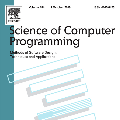Domain generalization (DG) endeavors to develop robust models that possess strong generalizability while preserving excellent discriminability. Nonetheless, pivotal DG techniques tend to improve the feature generalizability by learning domain-invariant representations, inadvertently overlooking the feature discriminability. On the one hand, the simultaneous attainment of generalizability and discriminability of features presents a complex challenge, often entailing inherent contradictions. This challenge becomes particularly pronounced when domain-invariant features manifest reduced discriminability owing to the inclusion of unstable factors, \emph{i.e.,} spurious correlations. On the other hand, prevailing domain-invariant methods can be categorized as category-level alignment, susceptible to discarding indispensable features possessing substantial generalizability and narrowing intra-class variations. To surmount these obstacles, we rethink DG from a new perspective that concurrently imbues features with formidable discriminability and robust generalizability, and present a novel framework, namely, Discriminative Microscopic Distribution Alignment (DMDA). DMDA incorporates two core components: Selective Channel Pruning~(SCP) and Micro-level Distribution Alignment (MDA). Concretely, SCP attempts to curtail redundancy within neural networks, prioritizing stable attributes conducive to accurate classification. This approach alleviates the adverse effect of spurious domain invariance and amplifies the feature discriminability. Besides, MDA accentuates micro-level alignment within each class, going beyond mere category-level alignment. This strategy accommodates sufficient generalizable features and facilitates within-class variations. Extensive experiments on four benchmark datasets corroborate the efficacy of our method.
翻译:暂无翻译




